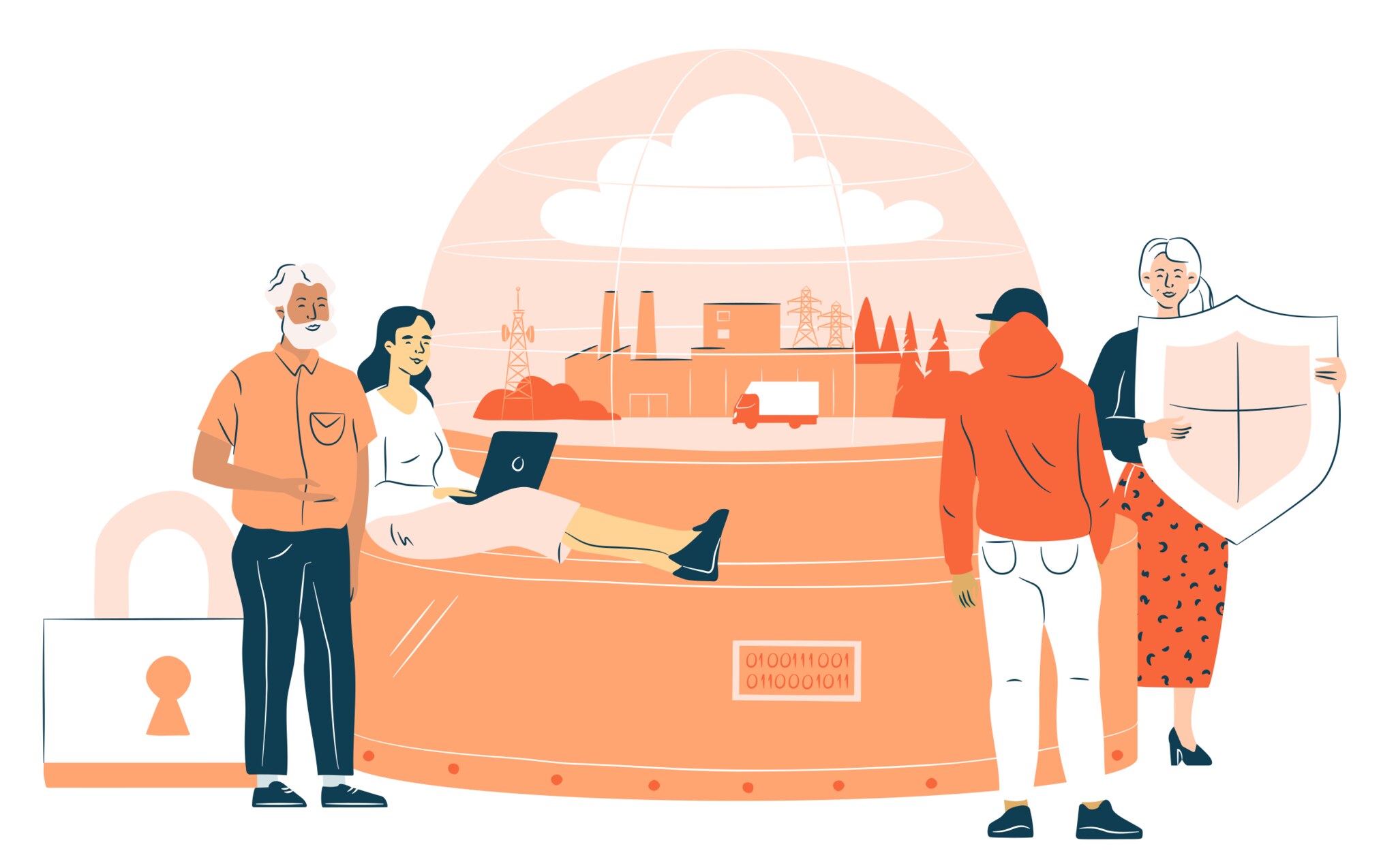The greatest danger in times of complexity is not the complexity itself — it is to act with yesterday’s thinking.
Once upon a time, there was a people who lived in a land of natural diversity and exceptional beauty.
Their natural resources made them wealthy: the more efficiently these resources were exploited, the greater the returns were for the rich and powerful of the country. Everyone knew that there were limits to how much the natural resources could be exploited, but the short-term benefits proved irresistible. A large, unique area of jungle was burned down for the productive use of land.
But then the people rebelled, demanding that the jungle must be recovered. People went to the streets to save the national animal, the capybara — the only non-fictional creature in this tale — from extinction caused by destruction of the jungle.
A jungle story
Under pressure, national politicians decided to build a new jungle.
This became the key strategic mission for all officials. Action was quickly taken. First, a broad-based steering group was set up to take charge of the project’s planning and implementation. Then, the organisation for the jungle rebuilding project begun.
An agency for trees was established; after all, trees are a key element of jungles. Next, a project office was created for insects, since insects are the most numerous creatures in the jungle. These were followed by separate units dedicated to plants, reptiles and birds.
The water bureau would be responsible for water areas, and the mammal agency for the fate of the world’s largest rodent, the capybara. Finally, targets and key performance indicators were set for each unit.
Things were moving according to plan.
However, progress was too slow from the perspective of the only surviving capybara pair. The species is unable to produce vitamin C by itself and needs water lilies for its nourishment. The project had not yet been able to start planting water lilies. So, the capybaras contacted the rodent department of the mammal agency to ask about the issue.
“That’s not our responsibility, you should probably talk to the plant institute.”
The capybara called there.
“It is still unclear which one is responsible for the water lilies, the plant institute’s seed unit or the water bureau. Right now, we’re doing something more important: defining indicators for our performance-based pay system. You should talk to the water bureau.”
And that is what the capybara did.
“We’re implementing a new digital ERP system, so nothing is likely to happen until that’s completed. Besides, there’s no money for water lilies in this year’s budget and we can’t spend money on extra-budgetary items. Maybe next year, but you should contact the politicians first.”
However, realising the importance of the capybara, the water bureau official was anxious enough to take the matter to a coordinating steering group. This was the right decision: the steering group decided to set up an internal audit unit for overseeing the agencies, create a dedicated customer service centre to deal with queries, add a FAQ section to the project website, and invest in service design training.
Time flew, annual budgets came and went, and several reports and the first external evaluation on the project were drawn up. Things were moving forward, but not in the jungle.
Then fate intervened. The jungle began to recover naturally, water lilies grew back, and the capybara family started to flourish. The people rejoiced, politicians were popular again and officials celebrated their forthcoming bonuses for succeeding in customer satisfaction surveys.
Anything is possible in tales. Unfortunately, not all fairy tales have a happy ending.
Tales are what they are, but they do tell us something meaningful about life. We can learn something from them. Rather than telling us what to do, they warn us about hazards and pitfalls. “While building a new jungle sounds exotic, we are now faced with comparable, urgent issues such as Covid-19, growing inequality, climate change, increasing mental health problems, young people who feel they can’t advance in life and the need, in government, to reinvent organisations as the operating environment changes rapidly.
A systemic transition is underway
A jungle is a classic example of a complex system burgeoning with symbioses, continuous natural selection, diversity of species and rapid biological cycles.
When we talk about complexity, we rarely explain all the underlying factors: variety, interdependence and the increasing pace of change. For many organisations, variety alone — and not a pace of change as is commonly thought — is a major challenge.
In both the jungle and social systems, these underlying factors are in constant motion due to their dynamic interrelationships. Paradoxically, complexity itself is complex. Nowadays contextual awareness and sensemaking are more and more important when choosing effective solutions and actions.
The greater the complexity and the contextual emphasis, the greater the risk of perceptual distortion. Perceptual distortion refers to a situation in which the wrong methods are applied due to incorrect, incomplete, or outdated perceptions. We are often misled by our mental models. The classic example from the business world is sticking to a strategy for too long after the market logic has changed. Perceptual distortion is different from our natural cognitive biases.
During systemic transitions — such as the Engels’ pause — the old and new tend to coexist. The old has not withered away, and the new has yet to take shape. We sense that something new is emerging, but still lack the words to describe it. The risk of perceptual distortion grows. The first Engels’ pause occurred during the transitional phase of the industrial revolution and lasted around forty years.
In the last 200 years or so, people have moved from farms to factories, from factories to offices, and from offices to the interaction society. We believe that a new Engels’ pause has begun due to greater complexity, digitalisation and the explosive growth and availability of information.
During a systemic transition, we must be more ready to ask “why?” before taking an action of any kind. The role of people becomes that of channelling consensus into contextually aware actions, interaction with other people at a deep level, creativity, and the ability to perceive phenomena systematically.
Car tuning is tempting
We’re very good at doing old and familiar things faster or doing the wrong things righter.
In today’s workplace the toolkit typically includes staff training, digitalisation, service design, and lean and agile transformations. All of these are important when used correctly, but they are very often misused. Digitalisation can help us to do efficiently something which should not be done at all, “digital Taylorism” serving as an example.
The exploitation of artificial intelligence also involves risks: for example, in education there is a risk that AI-enabled individualised exams will become more popular, despite knowing that students often only study “to the tests” and then forget everything, rather than internalising deeply what they have learned.
We are used to using the measures that tell us what happened in the past as a foundation of our decisions. These measures are often based on financial figures and provide an inadequate understanding of how to develop our current practices. Based on historical data, artificial intelligence can provide a continuum between the past and future. In terms of decision-making, it helps us to do the same old things slightly better.
However, we often apply a light touch to changing what we do, valuing predictability over development and learning. In our fairy tale, a familiar and safe option was chosen despite the huge scale of the challenge.
If we could challenge our current assumptions and perceptions, the leverage point of the change would be more powerful.
In some ways, this reminds us of fine-tuning a car. We know how to paint a car in a new colour and add new tyres and rims. We may even opt for more stylish interior upholstery and a new sound system — but we very rarely increase the performance by changing the transmission, engine and gears.
Better things, not just things better
Changing your perception means letting go of something. Unlearning is not the same as pressing the “Delete” button on a keyboard. When we have deeply learnt something, it defines the way we perceive the world and we cannot perceive it differently — our perceptions are part of our identity.
Learning is a process of connecting our existing beliefs with different ways of perceiving the world together. This process creates new synaptic connections in our brains. Changing our perceptions requires the weakening of some synaptic connections, and the strengthening of others. That’s what makes “unlearning” so challenging.
Changing thinking is a popular theme, without identifying how we might do so in practice. Assumptions or a prevailing mindset can rarely be changed through discussion or lecture, no matter how hard we try. Still, that is what we do all the time at different arenas of life.
Unfortunately, the “I teach or train and you listen” approach only works when the audience already has a similar mindset. Each person’s neural connections are unique. This makes, for example, giving feedback a challenge, since people are not identical machines that can be repaired by tightening certain nuts and bolts.
It has been known for decades that human behaviour can be changed in three ways: by means of persuasion all the way to coercion, by rationally reasoning, or normatively.
Persuasion rarely triggers a person’s internal transformation processes. Rational approaches, such as discussions, lectures and various types of coaching, work best when there is no need to change basic assumptions. Trying to change assumptions by following the rational approaches you will likely fall into an intervention trap and the reaction may be of the type “I don’t like consequences, so your facts must be wrong!”
Whereas the first two approaches have been widely used, the last has rarely been deployed. The normative, or experiential, approach is the best way to help people question their assumptions and perceive phenomena in a new way.
During an experiential learning process, people interpret a meaningful event or valid data which challenges their basic assumptions. A contradiction arises between what was previously assumed and is now experienced. This kind of learning process is called double-loop learning, or “unlearning”: first, we learn to observe the assumptions behind our actions, and only then do we take the necessary steps to solve the problem, based on a different perception.
The leverage point of change in our organisations is often rather insignificant, because the normative learning process is not used. Communication, coaching and training still lie at the heart of organisational change projects. These will remain important, but we can only learn to do “better things” by unlearning safe and familiar conventions — not just doing “things better”.
The paradox of service productivity
Failure demand is, as the name implies, a demand caused by a failure to do something or do something right for the customer. Customers come back, make further demands and unnecessarily consume the organisation’s resources because the service they receive is ineffective.
From the customers’ point of view, waiting times become longer and no suitable help is provided. In our tale, the capybara created failure demand, because its needs could not be met. For workers within a service system, failure demand is experienced as excessive workload and the related resource problem, or as customers in the wrong place at the wrong time.
Failure demand is a major cost factor in the service sector. This is often understood, but understood in a misleading way, with answers being sought in conventional solutions. For instance, leadership development, training employees to provide better customer service, process development, digitalisation and service design are not enough. Failure demand is a systemic phenomenon, which can only be reduced by changing the system. In simple terms, failure demand exists in service systems because they are organised according to the logic of industrial age mass production systems.
The amount of failure demand varies by sector. In the financial sector, it accounts for 20–60% of all demand; among telecommunications, it accounts for even 70–90%. Failure demand amounts to well over 50% in the public sector and, for instance, in social and health care it’s always around 80% or more.
It is well-known that failure demand is created by layered organisational structures, such as “front-office back-office” designs. Failure demand is also created by the centralisation or standardisation of services, which rarely enables organisations to take account of a customer’s nominal value — what the customer wants, how and why. It is important to be aware that digitalisation is a way of centralising and standardising services.
Traditionally the performance evaluation of a service system is largely based on the efficiency of service production, while no effort is made to understand the nature of demand. This perception can be summarised by three questions:
1) How much work do we have?
2) How many employees do we have?
3) How long does it take to do the work?
But what if a large amount of work to be done is failure demand? Would understanding this, for example, make any difference to nurse-to-patient ratios, or shortages of doctors?
Nowadays digitalisation seems attractive as it promises more efficient use of working time and lower transaction costs, particularly as the workload increases. Why do we so often have blind faith in extra resources, agility, service design, self-organisation and lean practices or other fads without realising that we are doing wrong things efficiently and, hence, our actions never “reach the jungle”?
Further, we try to make mass production-oriented service systems more customer-driven through vertical or horizontal integration, by enhancing service guidance and developing processes. New and expensive IT systems are developed, and existing, incompatible ones are integrated. However, none of this changes how we perceive the nature of demand.
People have a variety of needs, and a small percentage may consume a significant portion of the available resources when navigating their way through the service jungle. As the focus shifts to real or imagined structural problems in service production, we lose sight of the customer’s contextual needs, as in the tale of the capybara.
In manufacturing, the organisation alone defines the quality of its products but in services the customer and organisation define quality together. In fact, quality and efficiency are one and the same thing — you cannot have one without the other. In services we must not be concerned only on efficiency of service production, we also must have the interactional capability to meet customer’s nominal value in the context. This results in better services with lower costs as the amount of failure demand is reduced — a paradox.
Private sector operations are driven by the bottom line, which spurs companies to understand a customer’s nominal value. They want customers to come back, whereas the public sector is incentivised to save taxpayers’ money by doing the right thing the right way the first time. Despite this, public sector leaders often base their strategies solely on improving the efficiency of service production. In the case of services, much could be achieved by recognising the systemic connection between how we organise in service systems, our ability to meet a customer’s nominal value and the amount of failure demand.
The teaching of the tale
Just as in our fairy tale, people have a sincere desire to solve complex problems through organised cooperation. However, the way we perceive the world is often the biggest obstacle to solving problems, since it defines our methods. In the tale, building a new jungle was based on a reductionist mindset, focused on breaking large entities down into smaller units, and on division of labour and specialisation.
The underlying assumption is that smaller units are more simple to manage. However, there is one major flaw in this approach: it ignores the many interdependencies within a continuously changing systemic entity — a jungle brimming with life. Bureaucratic decision-making became disconnected from its context and the needs of the capybara.
For millennia, our strength has been based on its ability to cooperate in an organised way. We have been able to solve difficult problems through organised cooperation. Because of complexity, we are increasingly confronted with systemic phenomena similar to building a new jungle. Covid-19 has shown that the challenges we face are more complex, interdependent and more context-specific than ever before. For this reason, we need to perceive and develop new ways of engaging in organised cooperation.
Universal applicability is giving way to context-specific thinking. Best practices tend not to translate well between different contexts, except when dealing with ordered and predictable situations. Hence, we need more situational sensitivity in organised cooperation.
In the interaction society, the result of the work — and performance in general — is based on a synthesis of effective human interactions. Organisations should be viewed as platforms that enable demand to be matched with supply. Instead of power structures, these platforms should make use of social and functional structures in the organisation of cooperation. Organisation is about designing work to create customer value.
To solve the problems of our time, we need to engage in understanding the dynamic and intercontextual nature of complex systems. You have to begin by taking a different perspective, stepping into the jungle, and the capybara’s “shoes”. Coordinated self-organisation involves collective learning through sharing contextual knowledge. Context is not based on a snapshot, but a continually updated “live image”.
The lifecycle of knowledge and practices — the capital of learning — will shorten in the future. Learning how to learn, and flexible receptivity based on mental agility become increasingly important. You must be able to challenge your basic assumptions and, if necessary, unlearn what you have learned.
Nowadays, an organisation’s capability is increasingly based on perceptions on which organisational activities are based. In this sense, a key issue is how and through what perceptional processes people become organised. To create well-functioning organisations in a changing world, we need to understand the perceptional processes behind them.
The greatest danger in times of complexity is not the complexity itself — it is to act with yesterday’s thinking. To enable development and change, we must make the basic assumptions behind our perceptions explicit and then replace them with better ones. The way we perceive things and phenomena defines what we are able to see and develop.
It is easier to solve known problems than to learn how to recognise unknown problems. But that will not save the capybara.
Hermanni Hyytiälä
Olli-Pekka Heinonen
This article was originally published on Apolitical and written by Olli-Pekka Heinonen, former minister of education in Finland and current director general at the Finnish National Agency for Education, and Hermanni Hyytiälä, principal consultant at Gofore.



